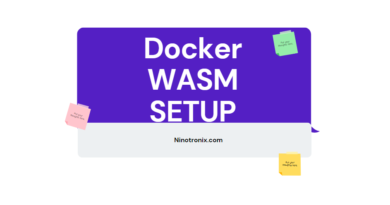What Are the DevOps Best Practices You Should Be Aware Of?
In today’s fast-paced and highly competitive business world, organizations are pressured to offer high-quality software products and services faster than ever. This is where DevOps comes in. This article will examine why DevOps is crucial in today’s business environment and what it can accomplish for your organization.
What is DevOps?
DevOps is a set of practices that focus on integrating software development (Dev) and IT operations (Ops) to allow faster and more reliable software application delivery. It focuses on collaboration, communication, and automation to simplify the software development lifecycle, from planning and coding to testing, deployment, and operations.
What is the importance of DevOps?
DevOps is important because it helps organizations achieve their business goals by delivering high-quality software products rapidly and reliably. Organizations can gain the following benefits by implementing DevOps practices:
- Faster time-to-market: DevOps helps organizations to deliver software products more quickly, lowering time-to-market and enhancing competitiveness.
- Improved quality: DevOps emphasizes continuous testing, automation, and collaboration, which results in higher-quality software with fewer defects.
- Increased efficiency: DevOps helps teams operate more efficiently by automating repetitive activities and procedures, freeing up time for crucial tasks.
- Greater collaboration: DevOps brings development and operations teams’ together, enhancing communication and collaboration and ultimately leading to better outcomes.
- Enhanced customer satisfaction: DevOps helps improve customer satisfaction and loyalty by delivering software applications faster and with higher quality.
Here are the best DevOps practices to follow.
1) Build a culture of collaboration and communication:
Collaboration and communication are fundamental DevOps principles. DevOps teams must break down silos and foster a culture in which all individuals collaborate towards a single goal.
This entails fostering open and honest communication among development, operational, and business partners. Organizations can increase their ability to adapt swiftly to changes and address difficulties by establishing a collaborative culture.
It also helps in the removal of boundaries between teams, resulting in enhanced job satisfaction and motivation among employees. Finally, a culture of cooperation and communication is critical to the success of any DevOps endeavor.
2) Automate repetitive tasks and processes:
One of the most important DevOps best practices is to automate repetitive operations and steps. It helps in increasing efficiency, reducing mistakes, and freeing up time for other important tasks.
DevOps teams can ensure that their software is deployed promptly and with high quality by automating operations like code testing, deployments, and monitoring. This also helps developers to focus on generating new features and functionality rather than spending time on manual and time-consuming tasks.
3) Use continuous integration and delivery (CI/CD) pipelines to streamline deployments:
Continuous integration and delivery (CI/CD) pipelines can significantly enhance the speed and efficiency of software deployments. Organizations can make sure that their software is delivered quickly and with fewer mistakes by automating the development, testing, and deployment process.
Furthermore, CI/CD pipelines enable better collaboration between development and operations teams since code changes can be tested and incorporated more readily. This practice also encourages smaller and more frequent releases, which may help organizations adapt more rapidly to changing consumer needs and market expectations.
4) Use infrastructure as code (IaC) to manage and deliver infrastructure:
Infrastructure as code (IaC) is a DevOps best practice that includes controlling and providing infrastructure using code rather than manually configuring systems. Ansible, Chef, and Terraform are examples of IaC technologies that can help in automating the process of establishing and managing infrastructure, making it easier to deploy and scale applications.
DevOps teams can apply IaC to assure infrastructure consistency and limit the risk of human mistakes or configuration drift. This practice also provides for version control and allows teams to roll back changes fast and easily if needed.
5) Monitor the performance and availability of applications and infrastructure:
It involves putting in place tools and processes to detect and fix problems before they cause downtime or performance decline. Monitoring key performance indicators (KPIs) such as response times, error rates, and resource utilization is part of this, as it sets up alerts and dashboards to offer visibility into the system’s health.
DevOps teams should also prioritize the usage of monitoring technologies that allow them to track down issues throughout the whole application stack, from the front end to the back end and everything in between.
6) Use feedback loops to get insights and improve procedures:
Feedback loops help in the gathering of data and insights from various phases of the development and deployment process, which can be used later to enhance processes and find areas for optimization. This includes input from end users, monitoring tools, automated testing, and other sources.
By introducing feedback loops into the DevOps workflow, teams may continually iterate and improve their processes, resulting in more efficient and successful software product delivery.
7) Implement security and compliance measures throughout the DevOps lifecycle:
Implementing security and compliance governs throughout the DevOps lifecycle is critical to ensuring the security and compliance of the software and infrastructure produced. This involves integrating security and compliance into all stages of the DevOps lifecycle, including planning, development, testing, deployment, and operations.
Implementing access restrictions, encrypting data at rest and in transit, doing frequent vulnerability assessments and penetration testing, and employing threat intelligence and monitoring technologies to identify and respond to security threats are all examples of security measures.
Compliance measures may involve ensuring that applications and infrastructure comply with industry-specific compliance requirements such as HIPAA or PCI-DSS, as well as adopting controls to maintain compliance.
By including security and compliance in the DevOps process, teams can guarantee that their software is secure and compliant from the start, lowering the risk of vulnerabilities and assuring regulatory compliance.
8) Encourage a culture of constant learning and improvement:
This involves in ongoing education and training for team members, staying updated with the newest technology and practices, and always looking for ways to enhance processes and outcomes. DevOps teams can remain ahead of the curve and give maximum value to their organizations by continually learning and improving.
Furthermore, an emphasis on continual learning can assist to keep team members engaged and motivated, leading to improved levels of work satisfaction and retention.
Remember that DevOps is a mindset and culture that need ongoing learning and shifts. We hope this blog has provided you with useful insights into DevOps best practices and will assist you in your DevOps journey. Thank you for your time.




